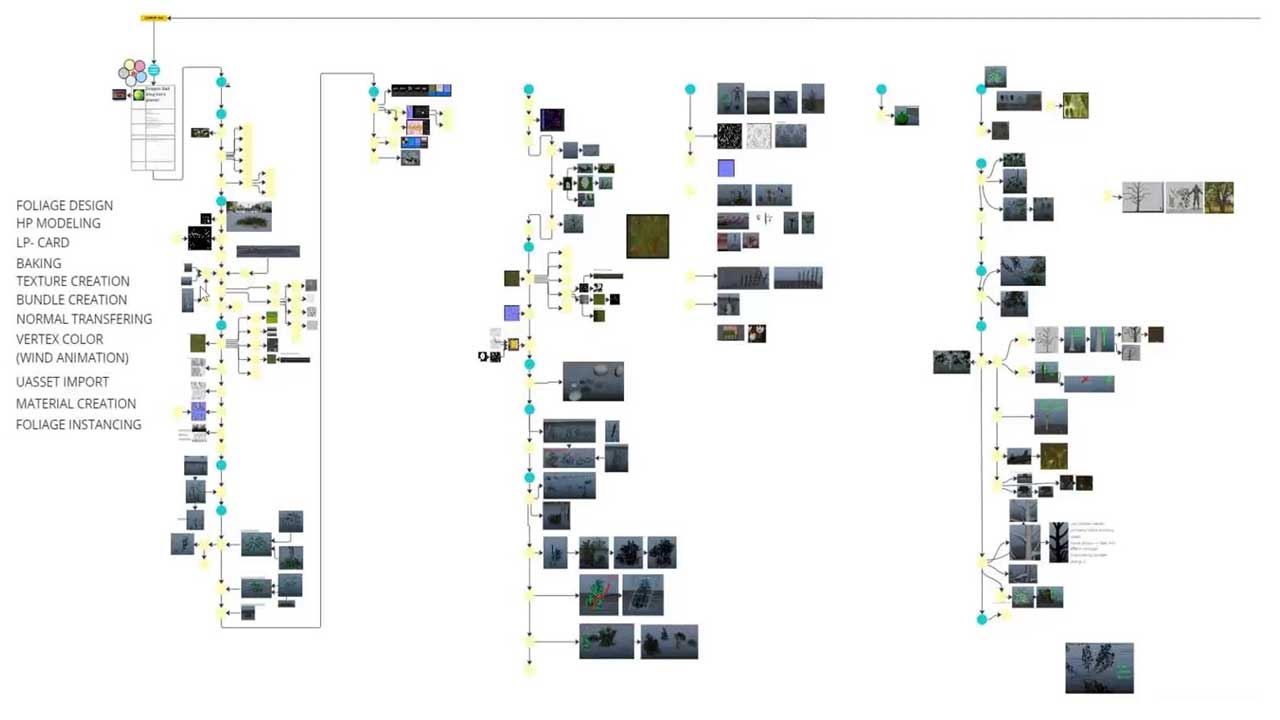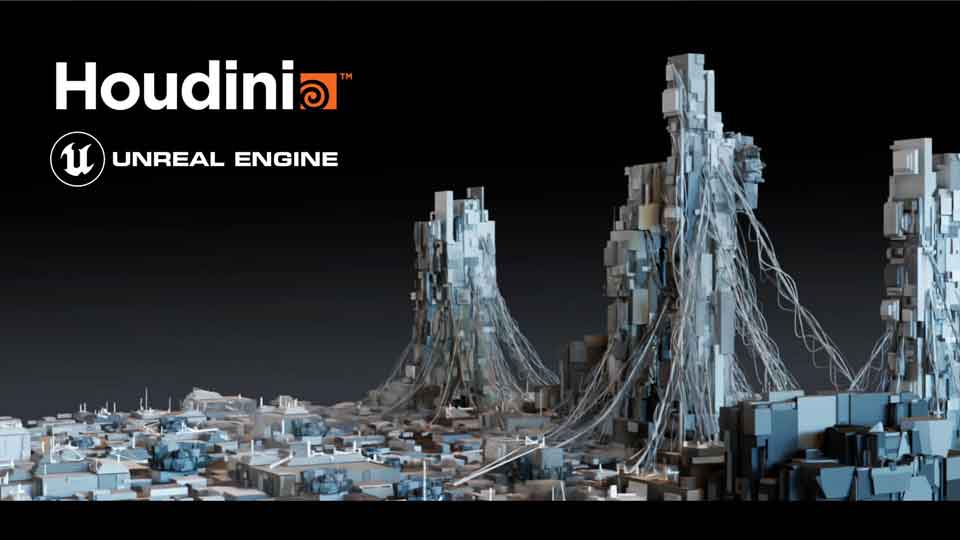
Procedural Vegetation tool Course is live!
Adolfo Reveron
3D for Videogames COURSE
Empty space, drag to resize
Ever wondered how the vegetation is created for videogames? We wondered too!
So we decided on diving into the actual foliage creation pipeline and creating a Houdini Vegetation Generator for Unreal Engine 5.
The results? A fully procedural tool that reduces the production times amazingly!
So we decided on diving into the actual foliage creation pipeline and creating a Houdini Vegetation Generator for Unreal Engine 5.
The results? A fully procedural tool that reduces the production times amazingly!
Have you ever tried to create vegetation by hand for a video game project? If the answer is 'yes', you already know this takes a lot of time and involves many steps.
Actually, you need to focus quite a lot to understand the whole pipeline: It starts with a deep study of vegetation references; there are completely different challenges ahead if you compare addressing a pine vs a palm tree.
Then, you'll decide on the main silhouette for the bushes/leaves/flowers/etc. You might address the High Modeling stage next, while keeping an eye on how well these silhouettes will pack in a given 2D texture, and then....Well, there are plenty of stages involved, which can be summarized in the following list:
- Foliage Design
- High Poly Modeling
- Low Poly card creation
- Baking High Poly (baked maps)
- Texture Creation
- Bundle Creation (collection of alpha cards, after baking stage)
- Creation of auxiliary geometry with decent normals to be transferred to the bundle cards
- Vertex color creation so that the bundle can be later imported in Unreal Engine 5 and then animated through some cool Unreal shader.
If you've covered this, you are half done, as you still need to import the bush bundle as a Static Mesh into Unreal, then create the shader, import the textures, create several instances, press play, inspect how the foliage uasset looks.....Only to realize that the lighting feels odd due to the auxiliary geometry you used as the source not being ideal, or maybe the roughness texture you created looked too dark, or maybe you don't like the silhouette and you need to go back to the high poly stage.... You get an idea of how time-consuming this process can get, right?
Let's visualize the process with a nice graph that includes stages, checkpoints, inputs, and outputs... It looks a bit daunting, doesn't it?
(Spoiler alert: All these steps are performed by vegetation artists)

So, what about creating a Houdini tool, so that the result could be tweaked on the fly and then reduce the whole pipeline to...let's say a few minutes?
Yeah, we thought this was a good idea too.
So, after a deep study of the process, we created a Houdini tool that allows tweaking the high poly (HP), low poly (LP) baking is automated, auxiliary shape creation and normal transferring are adapted on the fly, textures are dumped to disk in seconds, and vertex color is instantaneous too.... Did we mention this is fully procedural?
If you are interested in learning this magic, you can check out the tutorial we created (you already guessed that) - we give away some Houdini tutorial free lessons so you can get an idea!
Write your awesome label here.
Crea un Portfolio Diferenciador
para conseguir un empleo 3D
Crea un Portfolio Diferenciador
para conseguir un empleo 3D
Te ayudo a dejar de perder tu tiempo en un Portfolio que no lleva a nada
con un programa que te capacita de verdad y te lleva a entrevistas
Te ayudo a dejar de perder tu tiempo en un Portfolio que no lleva a nada
con un programa que te capacita de verdad y te lleva a entrevistas
Empty space, drag to resize
________________________________________________________________________________________________________________
©TECHART WORLDS 2025 - Todos los derechos reservados.
We give away FREE lessons for every course
REGISTRATION CLOSED
NO AVAILABLE SEATS
Subscribe to get notified for next call
SOLICITA INFORMACIÓN
Escríbenos un mail o llámanos,
indicando que estás interesado/a en:
'Máster de TechArt con Houdini para Videojuegos'
aliciaverduch@floridauniversitaria.com
Alicia Verduch (Atención al Estudiante)
662 957 196
